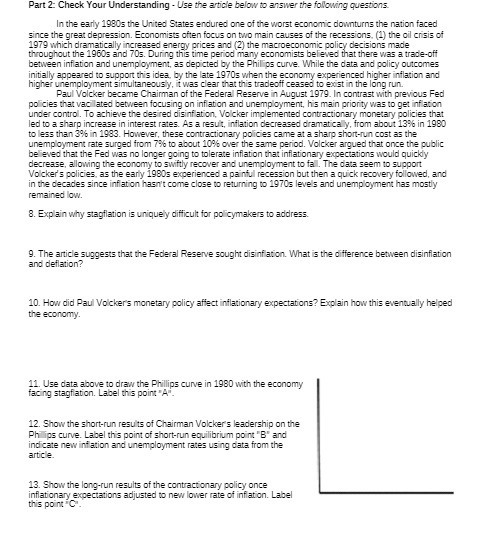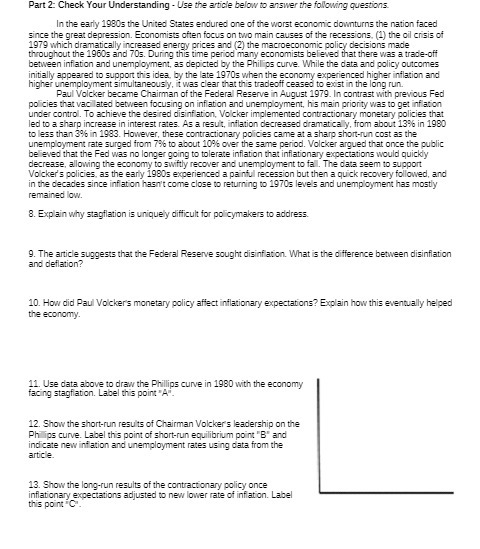
Part 2: Check Your Understanding - Use the article below to answer the following questions. In the early 1980s the United States endured one of the worst economic downturns the nation faced since the great depression. Economists often focus on two main causes of the recessions, (1) the oil crisis of 1979 which dramatically increased energy prices and (2) the macroeconomic policy decisions made throughout the 1960s and 70s. During this time period many economists believed that there was a trade-off between inflation and unemployment, as depicted by the Phillips curve. While the data and policy outcomes initially appeared to support this idea. by the late 1970s when the economy experienced higher inflation and higher unemployment simultaneously, it was clear that this tradeoff ceased to exist in the long run. Paul Volcker became Chairman of the Federal Reserve in August 1979. In contrast with previous Fed policies that vacillated between focusing on inflation and unemployment, his main priority was to get inflation under control. To achieve the desired disinflation, Volcker implemented contractionary monetary policies that ed to a sharp increase in interest rates. As a result, inflation decreased dramaticaly, from about 13% in 1980 to less than 39% in 1983. However, these contractionary policies came at a sharp short-run cost as the unemployment rate surged from 79% to about 10%% over the same period. Volcker argued that once the public believed that the Fed was no longer going to tolerate inflation that inflationary expectations would quickly decrease, allowing the economy to swiftly recover and unemployment to fa . The data seem to support Volcker's policies, as the early 1980s experienced a painiT recession but then a quick recovery followed, and in the decades since inflation hasn't come close to returning to 1970s leve's and unemployment has mostly remained low. 8. Explain why stagflation is uniquely difficult for policymakers to address. 9. The article suggests that the Federal Reserve sought disinflation. What is the difference between disinflation and deflation? 10. How did Paul Volcker's monetary policy affect inflationary expectations? Explain how this eventually helped the economy. 11. Use data albove to draw the Phillips curve in 1980 with the economy facing stagflation. Label this point "A". 12. Show the short-run results of Chairman Volcker's leadership on the Phillips curve. Label this point of short-run equilibrium point "B" and indicate new inflation and unemployment rates using data from the article. 13. Show the long-run results of the contractionary policy once inflationary expectations adjusted to new lower rate of inflation. Label this point "C."








